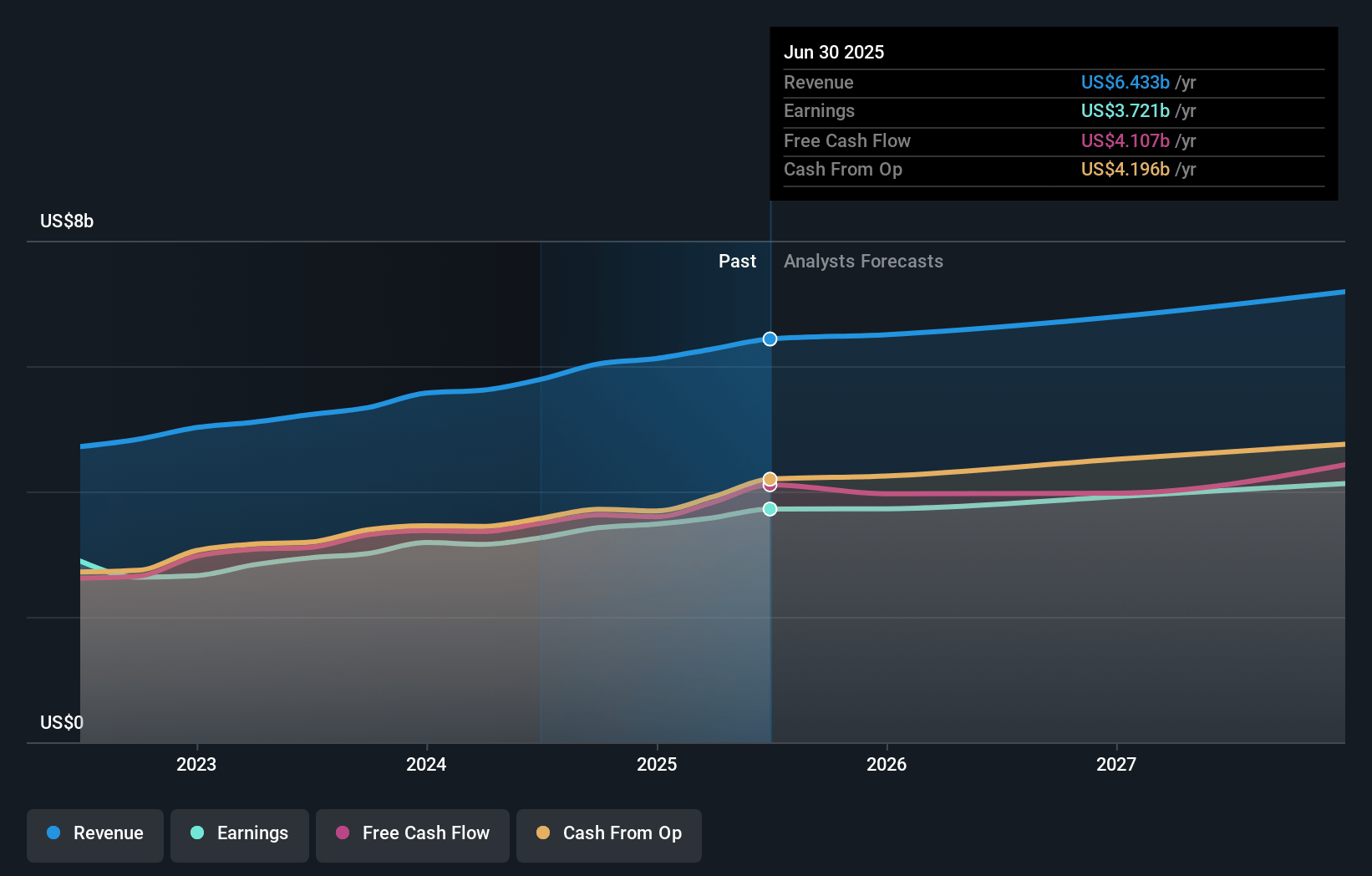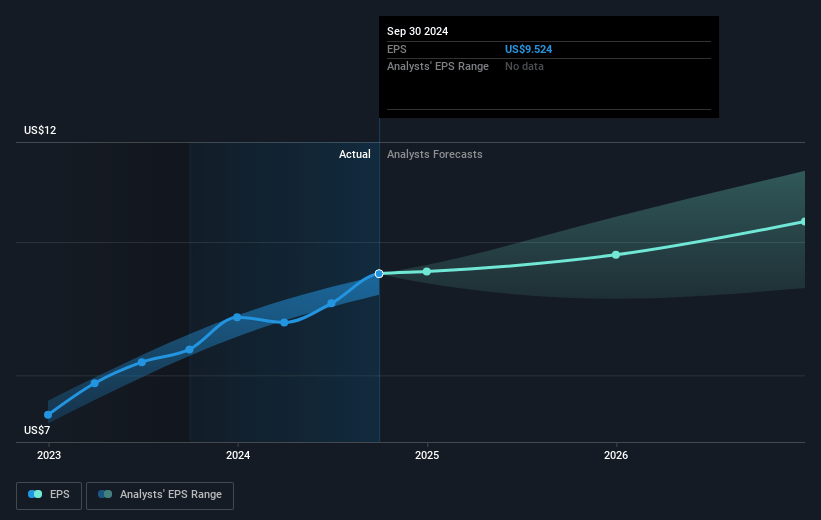Key Takeaways
- Launches and partnerships, like BrokerTec Chicago and retail trading with Robinhood, are key drivers for revenue growth and market diversification.
- Product innovation and international expansion in EMEA and APAC are vital for boosting earnings and sustaining demand for CME's risk management products.
- Increased margin requirements and competitive pressures, coupled with potential volatility stabilization, may challenge CME's trading volumes, market share, and revenue growth.
Catalysts
About CME Group- Operates contract markets for the trading of futures and options on futures contracts worldwide.
- The planned launch of BrokerTec Chicago, aiming to enhance links between cash and futures markets, could potentially boost revenue through increased customer acquisition and trading activity within CME's treasury futures and options market.
- Strong open interest growth in key asset classes such as interest rate, energy, and agricultural complexes suggests sustained demand for CME's risk management products, which could positively impact future earnings.
- Momentum in the international business, with record-breaking contract volumes in EMEA and APAC, indicates a robust revenue growth trajectory as global demand for CME's diversified products increases.
- Continued innovation in product offerings, such as the launch of FX Spot+, to facilitate better access to liquidity across markets, may support an increase in net margins and earnings by attracting more trading activity.
- Expansion of micro and retail trading partnerships, including those with platforms like Robinhood, is expected to drive diversification in revenue streams and support long-term growth in both trading volumes and associated market data sales.
CME Group Future Earnings and Revenue Growth
Assumptions
How have these above catalysts been quantified?- Analysts are assuming CME Group's revenue will grow by 4.7% annually over the next 3 years.
- Analysts assume that profit margins will increase from 57.1% today to 57.5% in 3 years time.
- Analysts expect earnings to reach $4.1 billion (and earnings per share of $11.73) by about April 2028, up from $3.6 billion today. The analysts are largely in agreement about this estimate.
- In order for the above numbers to justify the analysts price target, the company would need to trade at a PE ratio of 28.8x on those 2028 earnings, up from 27.4x today. This future PE is greater than the current PE for the US Capital Markets industry at 24.5x.
- Analysts expect the number of shares outstanding to decline by 0.13% per year for the next 3 years.
- To value all of this in today's terms, we will use a discount rate of 7.18%, as per the Simply Wall St company report.
CME Group Future Earnings Per Share Growth
Risks
What could happen that would invalidate this narrative?- Increased margin requirements in response to volatility may potentially deter some market participants, leading to a decrease in trading volumes and impacting future revenue.
- The intention to sell the OSTTRA joint venture, while monetizing a successful investment, could lead to a loss in diversification and long-term revenue streams from the post-trade services sector.
- The reliance on continuous high volatility for record earnings suggests that a stabilizing geopolitical environment could reduce demand for risk management products, negatively affecting revenue and net margins.
- Despite growth in international markets, there are competitive risks from strong local exchanges, particularly in rapidly growing regions like Asia, which could impact CME's market share and revenue growth.
- The strategic shift in trading dynamics, such as futurization and use of new products like BrokerTec Chicago, may face execution risks that could impact the anticipated increase in earnings and market positioning.
Valuation
How have all the factors above been brought together to estimate a fair value?- The analysts have a consensus price target of $270.353 for CME Group based on their expectations of its future earnings growth, profit margins and other risk factors. However, there is a degree of disagreement amongst analysts, with the most bullish reporting a price target of $305.0, and the most bearish reporting a price target of just $211.0.
- In order for you to agree with the analyst's consensus, you'd need to believe that by 2028, revenues will be $7.2 billion, earnings will come to $4.1 billion, and it would be trading on a PE ratio of 28.8x, assuming you use a discount rate of 7.2%.
- Given the current share price of $272.36, the analyst price target of $270.35 is 0.7% lower. The relatively low difference between the current share price and the analyst consensus price target indicates that they believe on average, the company is fairly priced.
- We always encourage you to reach your own conclusions though. So sense check these analyst numbers against your own assumptions and expectations based on your understanding of the business and what you believe is probable.
How well do narratives help inform your perspective?
Disclaimer
Warren A.I. is a tool utilizing a Large Language Model (LLM) that ingests data on consensus price targets, forecasted revenue and earnings figures, as well as the transcripts of earnings calls to produce qualitative analysis. The narratives produced by Warren A.I. are general in nature and are based solely on analyst data and publicly-available material published by the respective companies. These scenarios are not indicative of the company's future performance and are exploratory in nature. Simply Wall St has no position in the company(s) mentioned. Simply Wall St may provide the securities issuer or related entities with website advertising services for a fee, on an arm's length basis. These relationships have no impact on the way we conduct our business, the content we host, or how our content is served to users. The price targets and estimates used are consensus data, and do not constitute a recommendation to buy or sell any stock, and they do not take account of your objectives, or your financial situation. Note that Warren A.I.'s analysis may not factor in the latest price-sensitive company announcements or qualitative material.




